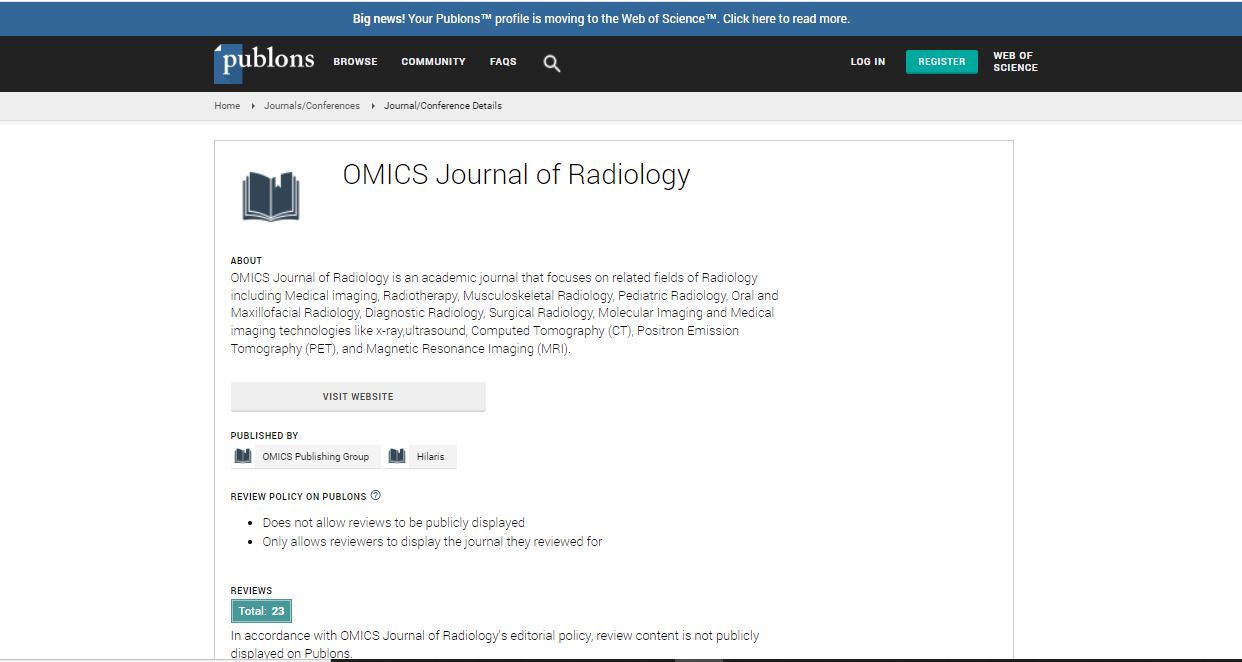Research Article
CT Examination Data Analysis as an Effective Method to Stimulate Patient Dose Reduction
Chatzoglou V1,2, Molfetas M2, Tsapaki V3, Nikolopoulos D4*, Chardali E5, Giaka E6 and Kottou S11National and Kapodistrian University of Athens, Faculty of Medicine, Medical Physics Laboratory, Athens, Greece
2Radiation Protection and Quality Assurance Office “M Molfetas”, Athens, Greece
3Konstantopoulio General Hospital, Nea Ionia, Athens, Greece
4Piraeus University of Applied Sciences (TEI of Piraeus), Electronic Computer Systems Engineering, Athens, Greece
5General Hospital of Syros, Ermoupoli, Syros, Greece
6General Hospital of Kefalonia, Argostoli, Kefalonia, Greece
- Corresponding Author:
- Nikolopoulos Dimitrios
Piraeus University of Applied Sciences (TEI of Piraeus)
Electronic Computer Systems Engineering, Athens, Greece
Tel: +0030-6977-208318
Fax: +0030-210-5381436
E-mail: dniko@teipir.gr
Received Date: September 22, 2016; Accepted Date: November 02, 2016; Published Date: November 07, 2016
Citation: Chatzoglou V, Molfetas M, Tsapaki V, Nikolopoulos D, Chardali E, et al. (2016) CT Examination Data Analysis as an Effective Method to Stimulate Patient Dose Reduction. OMICS J Radiol 5:237. doi: 10.4172/2167-7964.1000237
Copyright: © 2016 Chatzoglou V, et al. This is an open-access article distributed under the terms of the Creative Commons Attribution License, which permits unrestricted use, distribution, and reproduction in any medium, provided the original author and source are credited.
Abstract
Introduction: Radiation exposure from Computed Tomography (CT) examinations remains a concern due to the high doses it is associated with. In this study over 1000 patients’ dose information was collected from 11 CT scanners in Greece to evaluate the radiation dose levels in Greece and to examine their compliance with the national Diagnostic Reference Levels (DRLs). Materials and Methods: The information was collected mainly from CT dose reports and a statistical analysis of the Volumetric Computerized Tomography Dose Index (CTDIvol) and Dose Length Product (DLP) values was performed to evaluate their distribution among the studied sites and to identify the factors of overexposure and over usage of CT. Results and Conclusion: The majority of the examinations satisfied the national DRLs. Cases of overexposure were identified and recorded. A great discrepancy was found in the number of scans performed and the practices followed per type of examination, a fact that had a greater impact on patient exposure than the scanning protocol parameters.

 Spanish
Spanish  Chinese
Chinese  Russian
Russian  German
German  French
French  Japanese
Japanese  Portuguese
Portuguese  Hindi
Hindi 
